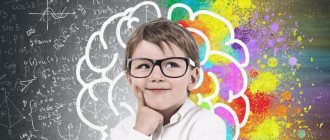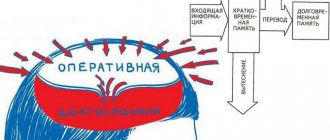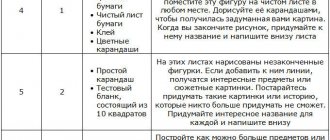Types of thinking and their characteristics: Unsplash Thinking is the most important ability of people. Thanks to him, a person learns about the world, gains experience, and plans for the future. Thinking arises as a result of practical and mental activity and comes in several types.
What types of thinking are there? Doctor of Psychological Sciences Robert Nemov divides thinking into theoretical and practical. In theoretical thinking, types such as conceptual and figurative thinking are distinguished, and in practical thinking, visual-figurative and visual-effective thinking are distinguished.
Visual-effective thinking
What is the peculiarity of visual-effective thinking? This is a way of understanding the world through practical activities. Historically, a person gets acquainted with the world around him through action:
- The child learns about the properties of different objects through touch. His desire to touch everything around him speaks of curiosity. This is how he understands that the battery is hot and the snow is cold. The desire to break toys is nothing more than curiosity and the desire to look inside.
- Primitive man got acquainted with the world using the same principle. First, he performed the action with his hands and thus formed new knowledge.
The modern adult individual also uses visual and effective thinking. It is especially developed in people who work with their hands - surgeons, plumbers, engineers.
In other words, a person is faced with a real situation, and it triggers his thought process. Visual and effective thinking develops in a person in infancy. The left hemisphere of the brain is responsible for it.
Visual Action Thinking: Unsplash
The role of images in mental activity
Divergent thinking - what is it?
The development of thinking begins in early preschool age. The child needs it to form vivid ideas about the world around him. However, this does not mean that adults do not need figurative memory. This skill is needed for:
- Storing in memory memories of bright events in life;
- Opportunities to enjoy music;
- Engage in dancing and other types of amateur performances;
- Creation of new works of art, literature, painting;
- Form a visual result of the activity in the mind, which allows you to speed up the process of achieving it;
- Creative approach to solving assigned problems.
Additional Information. Imaginative thinking does not guarantee absolute correspondence to the reality of the image that is stored in a person’s memory. The key points of what is seen or heard are recorded in the mind, the rest is thought out by the human brain on its own in a rational way. Therefore, the products of imaginative thinking are somewhat idealized.
Visual-figurative thinking
Following visual-effective thinking, visual-figurative thinking develops. It is formed in preschoolers aged 4–7 years and involves the right hemisphere of the brain.
What is the difference between visual and figurative thinking? It occurs when a person is faced with the surrounding reality and can:
- analyze it superficially;
- understand the characteristics of an object without touching it;
- compare different objects or phenomena.
This type of thinking is closely related to imagination. For example, a child looks at an object. N.I. Kozlov has short-term memory knowledge about similar objects and understands its properties without touching it. In adults, visual-effective thinking manifests itself during repairs. Seeing the bare walls of the apartment, they imagine how the wallpaper will look on them and where it would be better to place the furniture.
Visual-figurative thinking: Unsplash
Types of use
Images arise from events, knowledge stored in memory, or are recreated by imagination. A person relies on them when planning his actions, perceiving reality, finding a way out of problematic situations, and solving problems.
In music
Musical-figurative contributes to the understanding of music at the level of feelings, its comparison with familiar objects, natural phenomena, and events.
In the profession
The following professions are suitable for people with a developed ability to think in images:
- designer;
- inventor;
- director;
- artist;
- architect;
- other professions related to creativity and powerful visualization.
They can imagine what they have planned at the idea stage.
In art
Works of art reflect the author's attitude towards something. This is a synthesis of feelings, sensations, thoughts of the creator.
The ability to convey one’s inner world through an artistic image is a property of different types of figurative thinking.
Learning
Creates chains of knowledge by connecting information obtained in different lessons. Helps to apply them in different situations.
Conceptual thinking
Having mastered practical types of thinking, a person learns to reason theoretically. At this stage, conceptual thinking appears.
What is characteristic of conceptual thinking? As N.I. Kozlov, Doctor of Psychological Sciences, notes, it is not innate and does not develop on its own; it is formed during training. At this stage the person:
- gets acquainted with concepts and remembers their properties without personal contact;
- establishes general patterns and forms logical classes;
- learns to build logical chains.
Conceptual thinking does not replace practical thinking, but only complements it. It is closely related to the use of speech and certain logical operators. Therefore, in various classifications it is called verbal-logical (verbal-logical) thinking.
Conceptual Thinking: Unsplash
In adults
In adulthood, imaginative thinking is based on acquired knowledge and rich personal experience.
What is it for: functions
A person quickly collects all available information on a task in his head and imagines the expected outcome in the form of a picture and emotions. For a person who thinks in pictures:
- makes memorization easier;
- perception of text, television films;
- intuition develops.
Imaginative thinking saves effort, time and money, helping to visualize the result mentally and evaluate it.
Theoretical imaginative thinking
What is the peculiarity of imaginative thinking? This type is different in that the “material” for thinking is not a visual object or concept, but an image. It comes from memory or is recreated by imagination. People of creative professions, in particular writers and screenwriters, most often resort to imaginative thinking. Psychologist N.I. Kozlov called this type scenario thinking.
People with strong imaginative thinking are said to have developed intuition. In fact, when they see a situation, they recreate possible turns of events from experience. Using logic and imagination, they can predict the development of even a situation unfamiliar to themselves.
Imaginative thinking: Unsplash
According to other classifications, in addition to the above types, there are also creative, analytical, intuitive thinking, pre-logical (the ability to compose the simplest logical chains), alternative (the ability to build several possible scenarios for the development of events and choose the best one), critical, strategic thinking, etc.
A person uses all types of thinking, but the greatest development is achieved by the one required by the type of activity. Find out what kind of thinking you do best, and it will likely become the basis of your profession.
Original article: https://www.nur.kz/family/school/1791961-vidy-myslenia-i-ih-harakteristika/
Diagnostic methods and research methods
Diagnostic methods are available for all ages using a variety of techniques. Methods for children of primary school age:
- “Elimination of the superfluous” Purpose: studying the ability to generalize.
- “Simple analogies” Purpose: to study the flexibility of thinking.
- “Nonsense” Purpose: assessment of figurative ideas and the ability to build logical connections.
- The “Identification of Essential Features” technique is used to work with adolescents and adults. Purpose: to study the ability to identify main features and distinguish them from secondary ones.
- A common technique for children and adults is J. Raven’s Matrices. Goal: Studying the logic of thinking.
Thought processes
To solve a problem and reveal the essence of a phenomenon/situation, thought processes are activated. Depending on the purpose, one or another type of information processing will be used.
Analysis and synthesis
Synthesis is the combination of details, properties and actions into a holistic picture, depending on the relationships between these parts.
Analysis is the reverse process of synthesis, which consists of decomposing the whole into smaller bricks.
People can do this practically by connecting their thinking. For example, in kindergarten, at work. A clear and simple example would be the same constructor or the construction of a house.
This can also happen exclusively logically in the head, analyzing the general situation into individual important nuances. For example, revealing different sides of a new acquaintance, although before this you had a presumptive image of his personality.
Comparison
Comparison is the establishment of differences and similarities between objects and phenomena.
At the heart of this process is analysis. Because first you need to identify several main features in order to compare them later.
The comparison can be superficial or deep depending on the time spent and ability to analyze the details. And also one-sided and multilateral - did a person need to pay attention to only one aspect, or was their combination important?
Specification
Concretization is clarification, detailing the properties and descriptions of an object or situation. When the ray of attention is completely aimed at one point, and thinking works only in this direction.
Abstraction
Abstraction is the opposite of the above concept. A person is distracted from all the features of an object in order to consider one characteristic in more detail. So that others do not interfere or influence perception. It is through this process that scientists work on their theories and inventions.
Features of the development of thinking in preschool age
Children's thinking is characterized by a qualitative originality that distinguishes it from the thinking of adults. The development of thinking in preschool age is included in subject-related activities. A preschooler gains knowledge and experience through actions. These actions develop into ready-made schemes, are appropriated by the child (internalized) and become the basis of intellectual activity.
But the child not only uses ready-made connections that are familiar to him from actions with objects, but is aimed at establishing new relationships for him. A preschooler doesn’t just try on construction kit parts; selects a suitable object to “feed” the doll; builds a garage for his car - all these actions require analysis, comparison, generalization. That is, the child thinks, reflects.
The formation of a preschooler’s speech skills has a tremendous impact on the thinking process. Speech arises from the child’s need to communicate and interact, and then it acquires the functions of thinking.
In the first years of life, adult speech helps the child organize thinking and keep it in accordance with a specific goal. “Which ring in the pyramid will be next? Is it suitable? - the mother asks questions to the baby, and in response he tries to understand why one ring fits and the others do not.
The formation of active speech of the preschooler himself rapidly changes the conditions for the development of thinking. Now the child can ask a lot about what piques his interest. And the appearance of numerous questions is not long in coming.
Receiving answers, the baby finds out hidden characteristics and connections of objects that are not obvious to him, and children's thinking acquires elements of criticality and planning.
From younger to older preschool age, the internal mechanisms of the thinking process change. If in a small child the thought process is triggered by actions, then after 5 years a preschooler begins to actively operate with images.
Divergent and convergent thinking
These complex names are used, as a rule, to describe work in a team. But this can also concern thoughts in the head of one person. Now we will explain everything in accessible language.
Divergent thinking is the discovery and expression of new ideas without the opportunity to criticize and discuss. This type of thought process allows you not to stop your imagination and produce whole streams of sometimes good solutions to problems, sometimes complete nonsense.
Accordingly, convergent thinking is the assessment and analysis of ideas in a brainstorm. During such rational selection, many decisions are immediately discarded. And others, in a repeated circle, succumb to critical thinking.
In order to find a way out of the situation quickly and effectively, you should not go to extremes. Because you can either generate a huge pile of unrealistic ideas or get stuck in an analytical stupor, afraid to assume anything.








